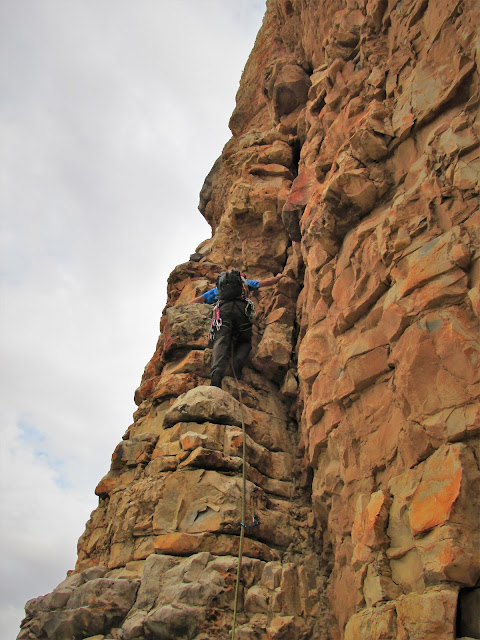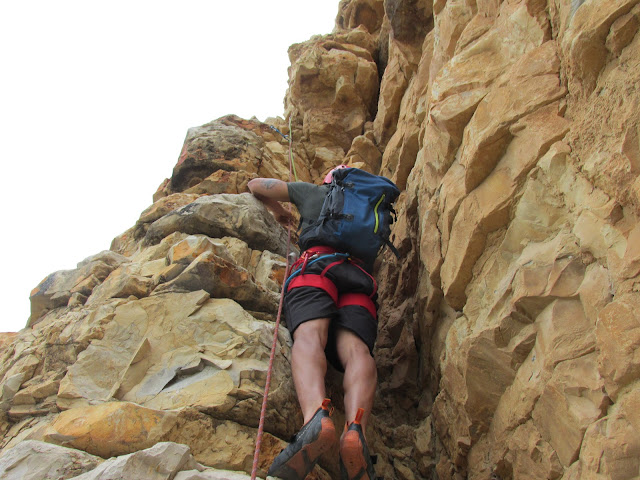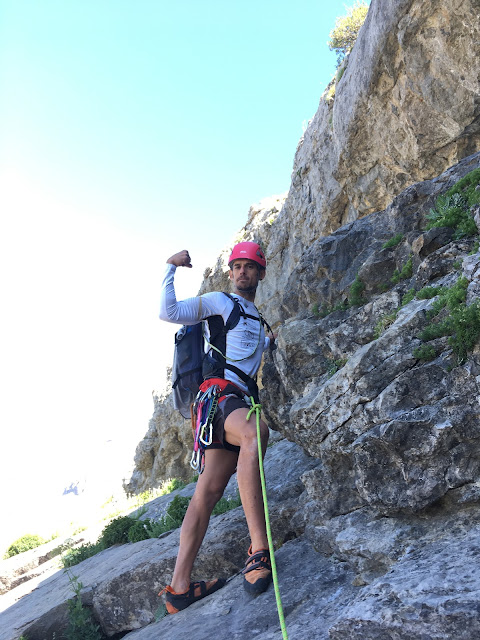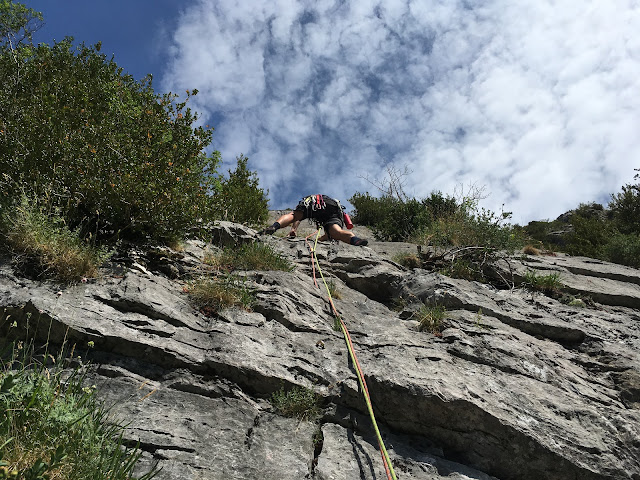It was a quite windy day, so Diego Diarte, Eduaro Teba and I decided to go to Mezalocha, to climb the original route to Peña del Moro. The first ascent was realized by José Antonio Bescós, Ángel López "Cintero" y Esteban de Pablo in May 1954.
The route has a lenght of 90 meters, and consists of 4 pitches in vertical and overhang cracks, it is quite technical and demanding.
Largo 1 (IV, 35m): Empieza por el espolón a la izquierda de la chimenea, superando una sucesión de bloques hasta alcanzar una plataforma donde se hace la primera reunión.
1st Pitch (IV, 35m): It starts on the buttress at the left of the chimney, overcoming a succession of blocks until it reaches the platform where the belay station is set.
Largo 2 (6b/A0, 20m): Sube por una fisura vertical y en forma de diedro abierto (V) hasta llegar al pie de un diedro extraplomado bastante liso. Este es el paso clave de la vía, (6b/A0) e introducirse en la fisura angosta formando una chimenea abierta. La reunión está metida en una fisura-cueva, siendo algo incómoda (cómo éramos una cordada de tres, empalmamos el segundo y el tercer largo).
2nd Pitch (6b/A0, 20m): Goes up on a vertical fissure with shape of an open dihedral (V) until it reaches to the bottom of a fairly smooth overhang dihedral. This is thec rux of the route (6b/A0), the route goes in a really narrow crack that forms a chimney. The belay station is inside of another crack but it is quite uncorfortable and it is only 20 meters we carried on to the third pitch.
Largo 3 (6a, 20m): Seguir por una fisura extraplomada, en rocas grises hasta un pequeño hueco, para acometer una fisura vertical y lisa.
3rd Pitch (6a, 20m):It continues on an another overhang crack, on grey rocks until it reaches a small hole, just after there is another vertical and smooth crack.
Largo 4 (IV, 15m): Muro final, bastante facil, y con buena roca.
4rd Pitch (IV, 15m): The last wall, quite easy and good quality rock.


















































